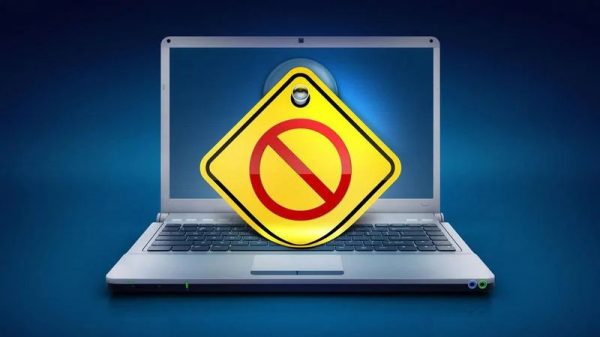“This concept of a single ‘converged’ framework to handle all types of communications, regardless of the medium, has found favour in few markets,” reads the submission by the Asia Video Industry Association (AVIA) to the Telecom Regulatory Authority of India (TRAI).
The submission deals with the question raised by India’s telecom regulator in its consultation paper seeking to address the issue of regulating digital technologies with a specific focus on enabling convergence of carriage of broadcasting and telecommunication services.
STAY ON TOP OF TECH POLICY: Our daily newsletter with top stories from MediaNama and around the world, delivered to your inbox before 9 AM. Click here to sign up today!
What is AVIA: It is the trade association for the video industry and ecosystem in the Asia-Pacific region. It consists of members like Netflix, Amazon, Disney+Hotstar, BBC Studios, Warner Bros. Discovery, Sony Pictures Television, and Zee TV, among others.
“Convergence…will require overhauling the legal, regulatory, licensing, administrative and institutional setup for both telecommunication and broadcasting services. This could potentially disrupt the current equilibrium and may even severely impact the growth of the telecommunication and broadcasting sectors…,” the submission warned.
Why it matters: AVIA’s comments are important as the body represents the interests of the broadcasting industry, including that of major OTT players. It will be interesting to see if the industry believes that the existing framework for content regulation is patchy and inadequate as pointed out by TRAI.
Key highlights from the submission
Bundling does not lead to convergence: “It is important to note that bundling of different services (like TV, broadband and voice) into one offering does not mean that these services have converged,” the AVIA stated, adding that bundling enables a service provider to provide multiple services in one place. It clarified that the networks for broadcasting and telecommunication services remain distinct in spite of bundling.
Are telecommunications and digital internet services the same? The association disagreed with TRAI’s view that all services made available through the internet should be governed in the same way as a telecommunications service provider. “It fails to take into account the fact that the fundamental nature of the service does not change merely because the means of distribution does,” the submission explained.
- It noted that a SVOD (subscription video on demand) service is a video content service whether it is delivered through the internet or some other means.
- The submission stated that digital services are built on top of telecommunication services and are characterised by hyper-competition and low entry barriers.
Is there a need for converged regulation: The submission said that it may be difficult to achieve a single, converged regulator in India. It added that it may be challenging because “skill sets, knowledge bases and societal sensibilities are not the same”. It buttressed its argument with the following reasons—
- Require specialised legislation: “Digital services require specialised legislation like the Information Technology Act, 2000 and a separate regulatory framework distinct from the regulatory principles that govern and regulate telecommunication services,” reads the AVIA’s submission. “We would also like to take this opportunity to highlight that content regulation is very different from carriage regulation,” the submission added.
- Existing frameworks are adequate: “We do not believe that these conclusive statements about the regulatory framework for content across different platforms reflect the evolving reality of the content regulation frameworks in India,” the association said. It added that these remarks “disregard institutional learnings” from bodies such as the Ministry of Information and Broadcasting (MIB), the News Broadcasting Standards Authority (NBSA), and the Digital Publisher Content Grievances Council (DPCGC), among others.
- Cannot remove self-regulatory bodies: “Removing the role of the independent self-regulatory framework can have a hugely negative impact on the preservation of independent media and the voicing of minority perspectives,” reads the submission, adding that an independent self-regulatory framework is crucial.
- Inconvenience to consumers: The submission cautioned that consumers can face issues like the ones listed below—
- Limitation of choice as services become more bundled and thus limited;
- Lack of pricing transparency;
- Downgraded service quality;
- Concerns around data privacy as companies have increased access to information about consumer usage patterns and preferences.
Opt for cooperation: “…we would advocate for greater cooperation across regulators, along with harmonisation of legislation, rather than additional regulations or a converged regulator,” AVIA recommended. It argued that the consultation has not shown any need for additional regulations, or that there is something to be fixed in the current frameworks.
- It pointed out that the paper does not provide “sufficient data to conclude that carriage of broadcasting services and telecommunication services have converged and are the same nor is there any clear data to prove that the market has failed”.
- The submission also noted: “…it is apparent that the present exercise is merely based on ‘market failure concerns’ and is not backed by any data evidencing any actual market failure.”
Overview of TRAI’s convergence paper: The paper seeks to answer a key question in internet regulation on whether there should be a single regulation and a single regulator, especially for content and carriage. The outcome of this consultation process is likely to influence what happens with the Indian Telecom Bill, 2022.
- The paper flags issues like standards and technical license conditions as important areas from a policy perspective which includes “safety, interoperability and quality of service”.
- The telecom regulator explores the idea of a converged regulation and regulator, licensing/permission-based regulation for providing online services, among other things.
- The paper also suggests a shift in the regulator from its own position of unbundling, and a separation of content from carriage.
This post is released under a CC-BY-SA 4.0 license. Please feel free to republish on your site, with attribution and a link. Adaptation and rewriting, though allowed, should be true to the original.

Also read:
- TRAI Convergence consultation: Is there a need for a separate convergence framework?
- How many IPTV connections does India have for its telecom regulator to call for convergence?
- Video: MediaNama’s Discussion On Internet Regulation, Convergence And TRAI
- 10 issues raised by TRAI in its convergence consultation & what’s wrong with them





























